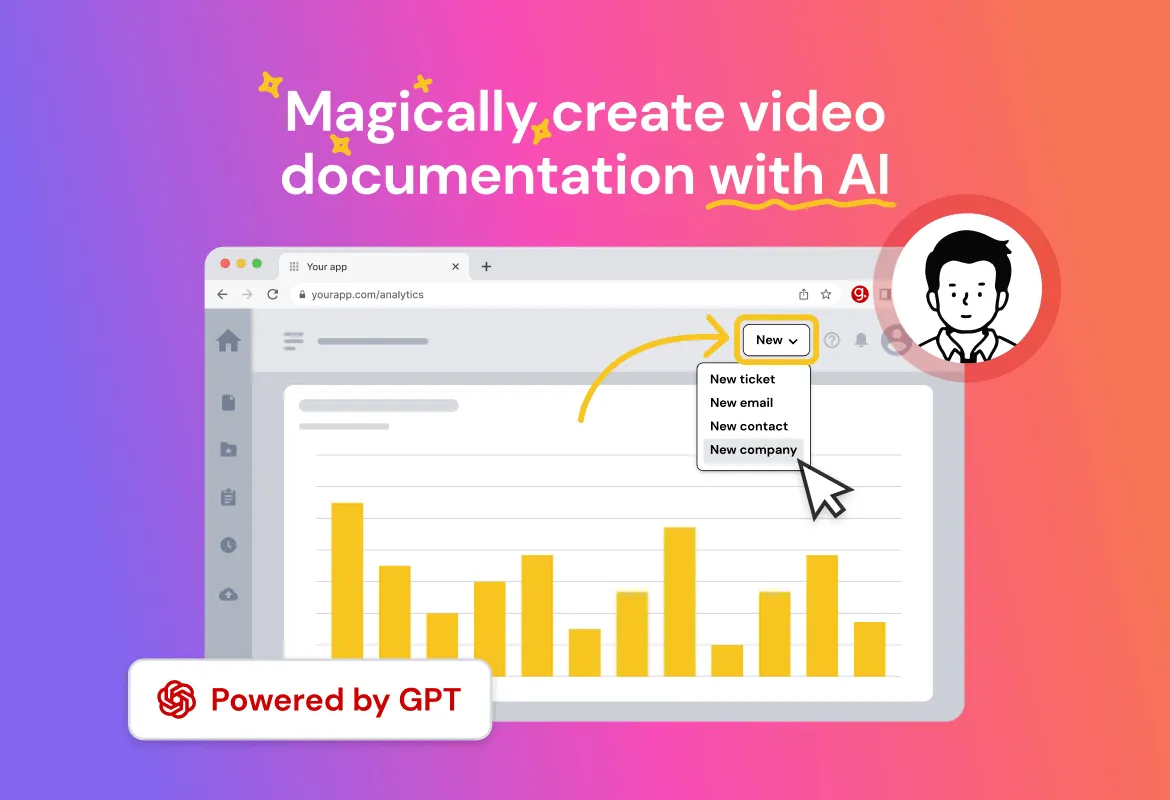4 Strategies for Effective Knowledge Sharing in the Workplace
Ever spend precious hours searching for an internal document, only to discover a colleague had it saved on their desktop all along?
Updated March 11, 2024.

Knowledge hoarding turns your workplace into a labyrinth of information, where essential expertise hides behind invisible walls.
You can effectively leverage the know-how for an advantage in the marketplace, but simply having a wealth of knowledge isn't enough. To truly thrive, you should make an effort to foster a culture of sharing.
What Is a Knowledge Sharing Culture?
A knowledge sharing culture means everyone feels free to exchange ideas and learn from each other. Employees talk openly about their wins, losses, and tips.
This culture has no secrets—skills flow freely through formal and informal channels, such as meetings and casual chats. Open communication helps everyone learn and solve problems together.
» Want to speed up onboarding? Learn to measure employee training effectiveness
Effective Strategies for Knowledge Sharing
1. Create a Proper Knowledge Sharing Environment
Make knowledge sharing a part of everyday work. Interactive activities like team games, quizzes, and even social events can get people talking and learning from each other. Set aside time for sessions where employees give their expertise on specific topics and film them to build a valuable video library for everyone.
You should break physical and virtual walls and design workspaces that encourage people to chat and connect. Another excellent employee enablement strategy is creating common office areas and organizing online events for remote teams.
2. Recognize and Reward Knowledge Sharing
Give credit where it's due. Say thanks with social media shoutouts and bonuses. It shows you value people who share their knowledge and makes others more likely to do the same.
3. Encourage Using Knowledge Sharing Tools
Apps such as Teams, Slack, and Trello can simplify knowledge sharing—primarily for remote employees. They simplify sending documents, working together, and finding information.
Adding AI-powered tools like guidde to these everyday apps can further boost skill sharing. They can save essential knowledge and make it instantly accessible, leading to better work and more creative ideas.
4. Formalize a Knowledge Management Process
Establishing a formal process means that you share the knowledge effectively and enforce the process within the company. You can do it by creating accessible platforms for crowdsourced expertise and know-how.
» Learn the challenges of remote work communication
Knowledge Sharing: Impact and Benefits
Sharing knowledge within a company brings several benefits:
- Sparks Creativity and Problem-Solving Working together encourages fresh ideas and better ways to tackle challenges.
- Boosts Teamwork and Trust: Sharing knowledge helps people connect and work together more effectively.
- Cuts Costs and Saves Time: Less duplicate work means everyone gets things done faster and cheaper.
- Improves Customer Focus: Understanding user needs can help you improve customer experience.
- Makes the Company Adaptable: Sharing knowledge helps everyone adjust to changing needs and stay ahead of the competition.
Take Toyota, for example. It made detailed step-by-step instructions for complex factory tasks, helping their workers do them better and safer. Xerox built a platform called "Eureka" for engineers to share repair tips and solutions, saving $100 million.
Sharing knowledge works wonders even in healthcare. Geisinger Medical Group started using a standard checklist for surgeries. It improved patient care and saved money.
» Check out the knowledge-management challenges you can solve with video
Overcoming Challenges
Several common challenges can impede effective knowledge sharing in organizations. Overcoming them requires targeted strategies:
- Lack of Trust Among Team Members: Sharing knowledge works best when people trust each other. Encourage casual talk and personal connections between employees. Organize social gatherings and team-building activities.
- Time Constraints and Deadline Pressures: Work can get busy, making it challenging to share what we know, so incorporate the process into everyday routines. You can set aside time each week or use handy platforms where people can find tips.
- Technology Constraint: Old-school ways such as email don't cut it for sharing skills. Use knowledge base builders like Loom to create a central library where everyone can search, tag, and update information.
- Team Leader Constraints: Sometimes, even team leaders can block knowledge sharing, maybe without realizing it. Listen to their worries and clear any misunderstandings.
Knowledge Sharing: Ignite the Spark, Fuel the Flame
A knowledge sharing culture is all about people openly exchanging what they know. It's like a friendly team huddle where everyone feels comfortable discussing ideas, mistakes, and successes. This makes employees happier and ensures they have the necessary information to succeed in their roles.
If you want to avoid scrolling through documents or wikis, guidde can organize videos into a knowledge base, making it easy for employees and customers to find the information they need. New hires can learn the ropes quickly and efficiently with step-by-step video guides, leading to faster onboarding and increased productivity.


